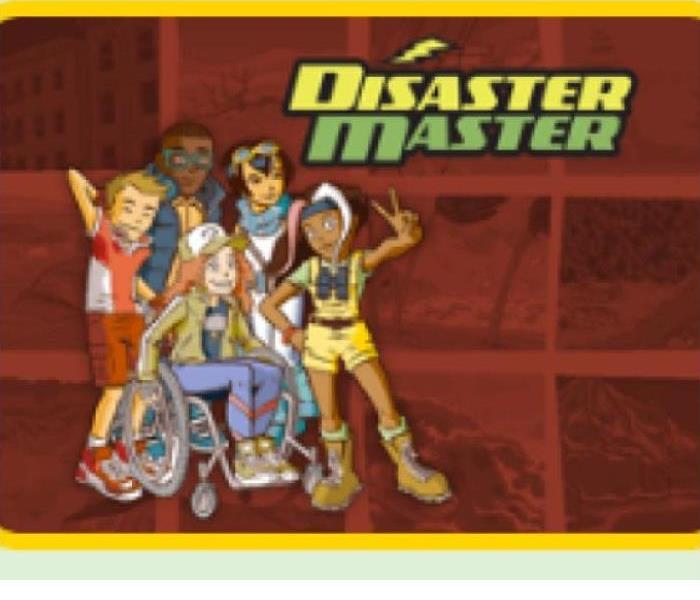Emergency Preparedness for Kids in Riverside City
5/8/2019 (Permalink)
Disaster Effects Everyone. And so it take everyone - youth, parents, and community members to help prepare.
Parents Get Your Kids On Your Team!
Preparing for emergencies shouldn't fall on your shoulders alone. Young children and teens alike need to be part of the process — for their own safety and sense of empowerment.
Games- Be a Hero!
Disaster Master
Get ready for some serious adventure! Step into the heart of the action as you help the Heroes face everything from home fires to earthquakes. What should they do? Make the right choice and earn points to get to the next level. Make the wrong choice and watch out! Winners get their own graphic novel! Click the link to play the game
Build a Kit
You're on a mission! Go through different locations with Gayle and her friends to find what you need for an emergency kit. Will you pick the correct items? Have fun and build a checklist along the way. Hurry! Your family is counting on you.
What are WEAs
Wireless Emergency Alerts (WEAs) are emergency messages sent to cell phones by authorized government agencies to let you know about dangerous weather conditions, emergencies, and other local hazards.
- Read the alert
- Take action
- Follow the directions
Emergency Checklist for Kids
Electricity lights up our world! Think of all the ways we rely on electricity: keeping food fresh, cooking meals, and getting information through the internet or TV. It keeps us warm in the winter, cool in the summer, and connected with each other year round. Oftentimes, we use electricity to play and have fun! Are you and your family ready if disaster strikes and your home is without power?
Help your family build an emergency kit! Collect these items and keep them together in a safe place that you can find easily. Make sure you have enough supplies to last for at least three days!
Emergency Supplies List
Go on a quest with your family! Create a scavenger hunt! Make planning fun!
Helping Children Cope
Disasters can leave children and teens feeling frightened, confused and insecure. And kids' responses can be quite varied. It's important to not only recognize these reactions, but also help children cope with their emotions.
You are their biggest influence.
When you can manage your own feelings, you can make disasters less traumatic for your kids.
• Encourage dialogue. Listen to your kids. Ask them about their feelings. Validate their concerns.
• Answer questions. Give just the amount of information you feel your child needs. Clarify misunderstandings about risk and danger.
• Be calm, be reassuring. Discuss concrete plans for safety. Have children and teens contribute to the family's recovery plan.
• Shut off the TV! News coverage of disasters creates confusion and anxiety. Repeated images may lead younger kids to believe the event is recurring. If your children do watch TV or use the Internet, be with them to talk and answer questions.
• Find support. Whether you turn to friends, family, community organizations or faith-based institutions, building support networks can help you cope, which will in turn help your children cope.
For many kids, reactions to disasters are brief. But some children can be at risk for more enduring psychological distress. Three risk factors for this longer-lasting response are:
Responding to an emergency is one thing …
what's the best way to respond to your
child during or after a disaster?
Resources
Listen, Protect and Connect: a Psychological First Aid Series for parents and children, teachers, and families and neighbors.






 24/7 Emergency Service
24/7 Emergency Service
